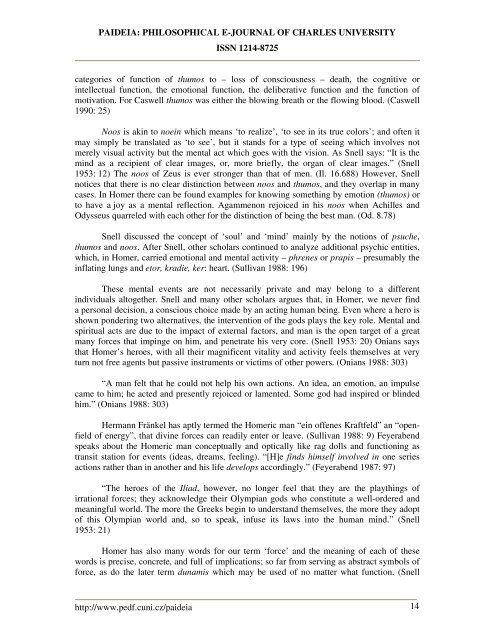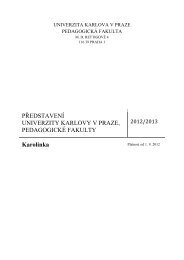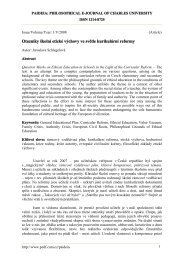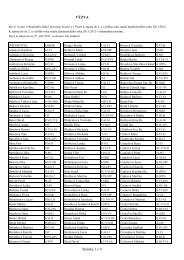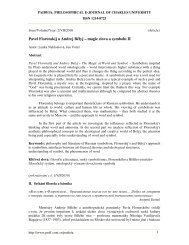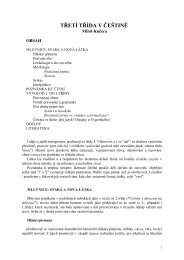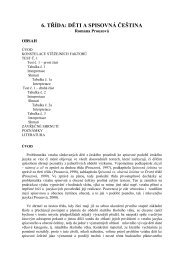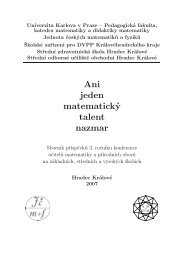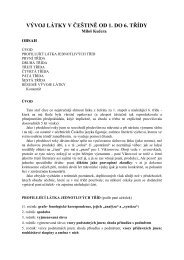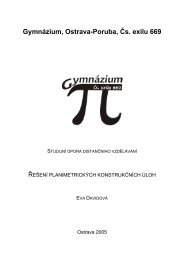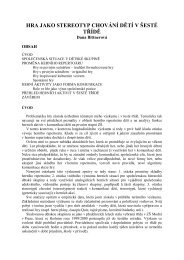Feyerabend's interpretation of Archaic Age
Feyerabend's interpretation of Archaic Age
Feyerabend's interpretation of Archaic Age
You also want an ePaper? Increase the reach of your titles
YUMPU automatically turns print PDFs into web optimized ePapers that Google loves.
PAIDEIA: PHILOSOPHICAL E-JOURNAL OF CHARLES UNIVERSITYISSN 1214-8725categories <strong>of</strong> function <strong>of</strong> thumos to – loss <strong>of</strong> consciousness – death, the cognitive orintellectual function, the emotional function, the deliberative function and the function <strong>of</strong>motivation. For Caswell thumos was either the blowing breath or the flowing blood. (Caswell1990: 25)Noos is akin to noein which means ‘to realize’, ‘to see in its true colors’; and <strong>of</strong>ten itmay simply be translated as ‘to see’, but it stands for a type <strong>of</strong> seeing which involves notmerely visual activity but the mental act which goes with the vision. As Snell says: “It is themind as a recipient <strong>of</strong> clear images, or, more briefly, the organ <strong>of</strong> clear images.” (Snell1953: 12) The noos <strong>of</strong> Zeus is ever stronger than that <strong>of</strong> men. (Il. 16.688) However, Snellnotices that there is no clear distinction between noos and thumos, and they overlap in manycases. In Homer there can be found examples for knowing something by emotion (thumos) orto have a joy as a mental reflection. Agammenon rejoiced in his noos when Achilles andOdysseus quarreled with each other for the distinction <strong>of</strong> being the best man. (Od. 8.78)Snell discussed the concept <strong>of</strong> ‘soul’ and ‘mind’ mainly by the notions <strong>of</strong> psuche,thumos and noos. After Snell, other scholars continued to analyze additional psychic entities,which, in Homer, carried emotional and mental activity – phrenes or prapis – presumably theinflating lungs and etor, kradie, ker: heart. (Sullivan 1988: 196)These mental events are not necessarily private and may belong to a differentindividuals altogether. Snell and many other scholars argues that, in Homer, we never finda personal decision, a conscious choice made by an acting human being. Even where a hero isshown pondering two alternatives, the intervention <strong>of</strong> the gods plays the key role. Mental andspiritual acts are due to the impact <strong>of</strong> external factors, and man is the open target <strong>of</strong> a greatmany forces that impinge on him, and penetrate his very core. (Snell 1953: 20) Onians saysthat Homer’s heroes, with all their magnificent vitality and activity feels themselves at veryturn not free agents but passive instruments or victims <strong>of</strong> other powers. (Onians 1988: 303)“A man felt that he could not help his own actions. An idea, an emotion, an impulsecame to him; he acted and presently rejoiced or lamented. Some god had inspired or blindedhim.” (Onians 1988: 303)Hermann Fränkel has aptly termed the Homeric man “ein <strong>of</strong>fenes Kraftfeld” an “openfield<strong>of</strong> energy”, that divine forces can readily enter or leave. (Sullivan 1988: 9) Feyerabendspeaks about the Homeric man conceptually and optically like rag dolls and functioning astransit station for events (ideas, dreams, feeling). “[H]e finds himself involved in one seriesactions rather than in another and his life develops accordingly.” (Feyerabend 1987: 97)“The heroes <strong>of</strong> the Iliad, however, no longer feel that they are the playthings <strong>of</strong>irrational forces; they acknowledge their Olympian gods who constitute a well-ordered andmeaningful world. The more the Greeks begin to understand themselves, the more they adopt<strong>of</strong> this Olympian world and, so to speak, infuse its laws into the human mind.” (Snell1953: 21)Homer has also many words for our term ‘force’ and the meaning <strong>of</strong> each <strong>of</strong> thesewords is precise, concrete, and full <strong>of</strong> implications; so far from serving as abstract symbols <strong>of</strong>force, as do the later term dunamis which may be used <strong>of</strong> no matter what function. (Snellhttp://www.pedf.cuni.cz/paideia 14


